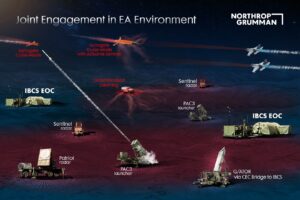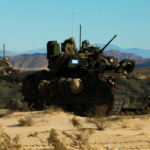
The Army on Thursday conducted another successful test of its future missile defense command platform developed by Northrop Grumman [NOC], as the company readies for the start of initial operational test and evaluation and a production contract award early this fall. The latest risk reduction effort for the Integrated Air and Missile Defense (IAMD) Battle Command System (IBCS) was conducted at White Sands Missile Range in New Mexico and featured the “widest variety of sensors to date,” to include incorporating…

 By
By 











